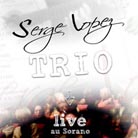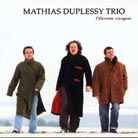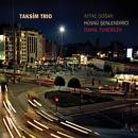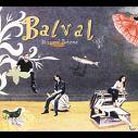|
|
|
|
This review page is supported in part by the sponsors whose ad banners are displayed below
|
|
 |
|
It seems that the Liveline reconstitutes real music which consists of timbre (tonality in Franck's universe), dynamics and timing. For some reason, the Liveline seems able to deliver all notes at once to create absolute coherence. The human hearing system is very sensitive to timing issues. Milliseconds matter and here the Liveline helps to align all notes where they should be in time.
The reason why Franck inserted extra splices roughly in the middle of the silver return was that he found out he could "fill in the gap in the middle of the image". Is this the secret why, when his cable is used, the music obtains this powerful sense of reaching out for you?
Before we left ASI headquarters, Frank entrusted us with a box of two Liveline pairs to test in our system. He instructed us that we had to play the cable for 15 minutes without listening during which time the solder would set in. After about 2 hours, the cable is almost at its peak which it reaches fully over time.
The next morning, we left Paris with the cables in tow and the promise of installing them as soon as we entered our home. During the 4-hour drive, we kept wondering what we had just experienced. Did we listen and compare all the wrong interconnects over all these years? If so, it would mean that a lot of reviews were based on wrong assumptions. And not only ours! On the positive side, we would have a gigantic stock of CDs to reassess. That is, if the Liveline performed the same in our setup as it did in Franck's and how Srajan had already described his results in Cyprus.
|
|
|
|
The 480 kilometers went by fast and traffic only added 15 minutes to the ETA. After opening the front door and resetting the security alarm, the Liveline took its place connecting the Audio Note DAC and Meishu integrated. Now we had to wait for 15 minutes to charge the cable as the instructional notes reminded us.
After we unpacked the bags and sorted out the newly acquired books, CDs and food stuff -- Paris is great for shopping these articles; check out BHV for books and CDs and Lafayette Gourmet for food -- it was time to check whether the Liveline would perform the same stunt it had in Paris.
We retrieved the Hadouk Trio Utopies and loaded it. Again we were pleasantly surprised by the same powerful and distinct bass lines providing the fundament for the higher octaves. In our own familiar environment, another fact clarified. With the Liveline in the system, the placement of instruments and musicians around the virtual stage was very different than with any other cable previously.
|
|
 |
|
|
Center stage was far more centered and anchored to become the real heart of the happening. This could have been an isolated recording artifact so we tested around. First up was a newcomer we had just picked up in Paris - Serge Lopez Trio's Live au Sorano, a recording of the flamenco guitarist in the Sorano Theatre in Toulouse. In a Nuevo Flamenco setting with electric bass guitar and drums, the concert focused on the trio collaboration as the main trump card. The repertoire presented ranges from a softly sung ballad to fierce guitar work with palmas to the trio's signature sound whereby Jacky Grandjean weaves beautiful lines on his 5-string bass underneath and between the classic flamenco guitar of Lopez. Think of Stanley Clarke meets Jaco Pastorius. Pascal Rollando adds extra rhythm accents. This is a very special recording of wonderful music. In the system with the Liveline in action, the musicians completely unglued from the loudspeakers with a coherence between the left and right channels as never before.
|
|
|
 |
|
Matthias Duplessy leads another French trio and their l'Hermite Voyageur was next in the player. We had never heard of Duplessy before but quickly realized we had surely missed out. The formation sports Duplessy on guitar, berimbau (the instrument that accompanies capoeira dancers), the Mongolian horse-head fiddle Morin Khuur, oud, flute and voice. Jean-François Ott handles the cello and percussion, Nicolas Gorg more of the latter. These gents mix Mongolian sounds and throat singing techniques with a 17th-century Russian song, then switch to flamenco and just as easily to modern classic or World Symphonica. The depiction of the musicians in the room was once again staggering realistic. And it seemed as though trios were unexpectedly prominent on this shopping spree as the next one turned out to be the Taksim Trio from Turkey that has three experienced session players join hands on clarinet, baglama lute and qanun zither. These basically higher-pitched instruments sounded clear but with body and breath.
|
|
|
|
|
|
 |
|
 |
|
|
|
 |
|
Balval's Blizzard Boheme of Eastern European gypsy melodies reworked with jazz and blues influences was a joy to listen to as well. Ditto for Candela by El Puchero del Hortelano which brought up memories of Barrio Chino's Mediterra Nostra - Flamenco from Granada with a twist as saxophone, cello and percussion find themselves blended in together with vocals.
|
|
|
|
With each and every CD -- newly acquired or tried 'n' true -- the effect of the Liveline was repetitive. The music was more in the room with definite height information. Another observation was that especially with hornspeakers like our Avantgardes, the location of instruments in the room could at times be compromised by a single note arising audibly from the tweeters like a game of hide and seek wherein the one who hides makes a noise to give away his location.
In stereo, two distinct signals are recombined in the brain to create an illusion of source location in three-dimensional space. One tone out of balance coming from the speakers breaks the illusion. With the Liveline in the system, it appeared as though the origin of the music was one unified meta loudspeaker encapsulating the two physical loudspeaker halves. Marja described it as a half dome sitting in front of the whole set (including the loudspeakers). This half dome radiates the music into the room in an ultra-coherent way and passes on also height information. The result is an utter absence of the physical speakers with regard to left/right segregation as well as individual driver cues. All the discrete drivers seem to cohere into one to be able to trick the brain into 'thinking' there is a stage with real musicians in the room.
That these cables are exceptional must be clear by now. Once a pair is included in a system, the sound characteristics change dramatically for the better. If you then return to the best you had before, a lot of things come crashing down. Hard. The image deflates, coherence splinters and speakers reappear. The golden trio of timbre, dynamics and timing gets broken up in comparison to the Liveline unity.
|
|
 |
|
Franck Tchang discarded every commandment above and went his own way. We harbor no doubt that when the so-called skeptics get word of his latest project, the real fun will begin. We can already see the enigmatic Cheshire cat smile on Franck's face. With his acoustic resonators, he created a whole new category of devices and stirred up massive grief. Now he has entered the snake pit of cables with something revolutionary and at a strong price.
For the next part of this review, we are going to compare cables. Or should we call it apples and pears? Or even wolves and sheep?... |
|
|
|
 |
|
|
|
|
 |
|
 |
|
 |
|
 |
|
|
|
|
|
|
|
|
|
|
|
|
|
|
|